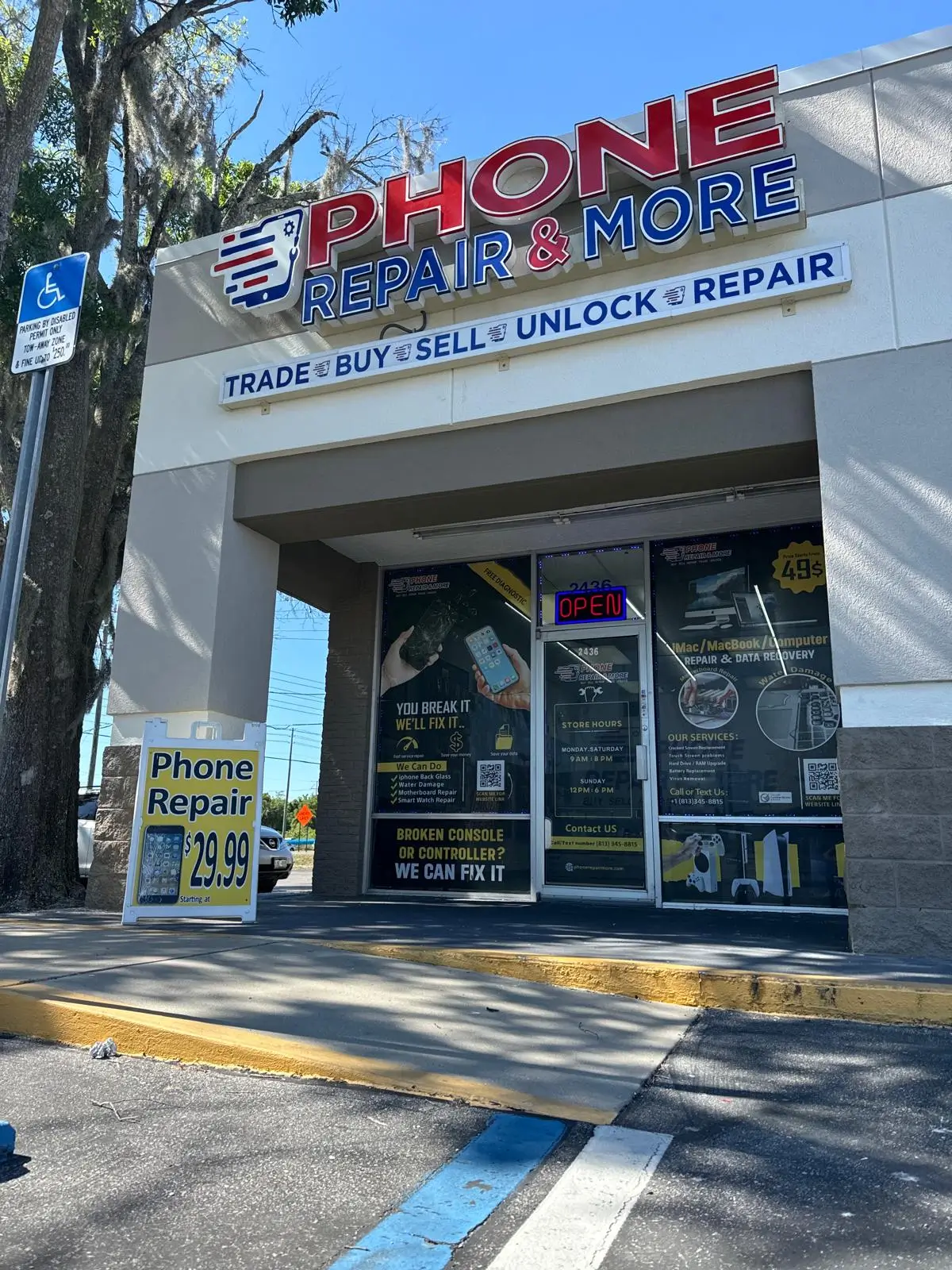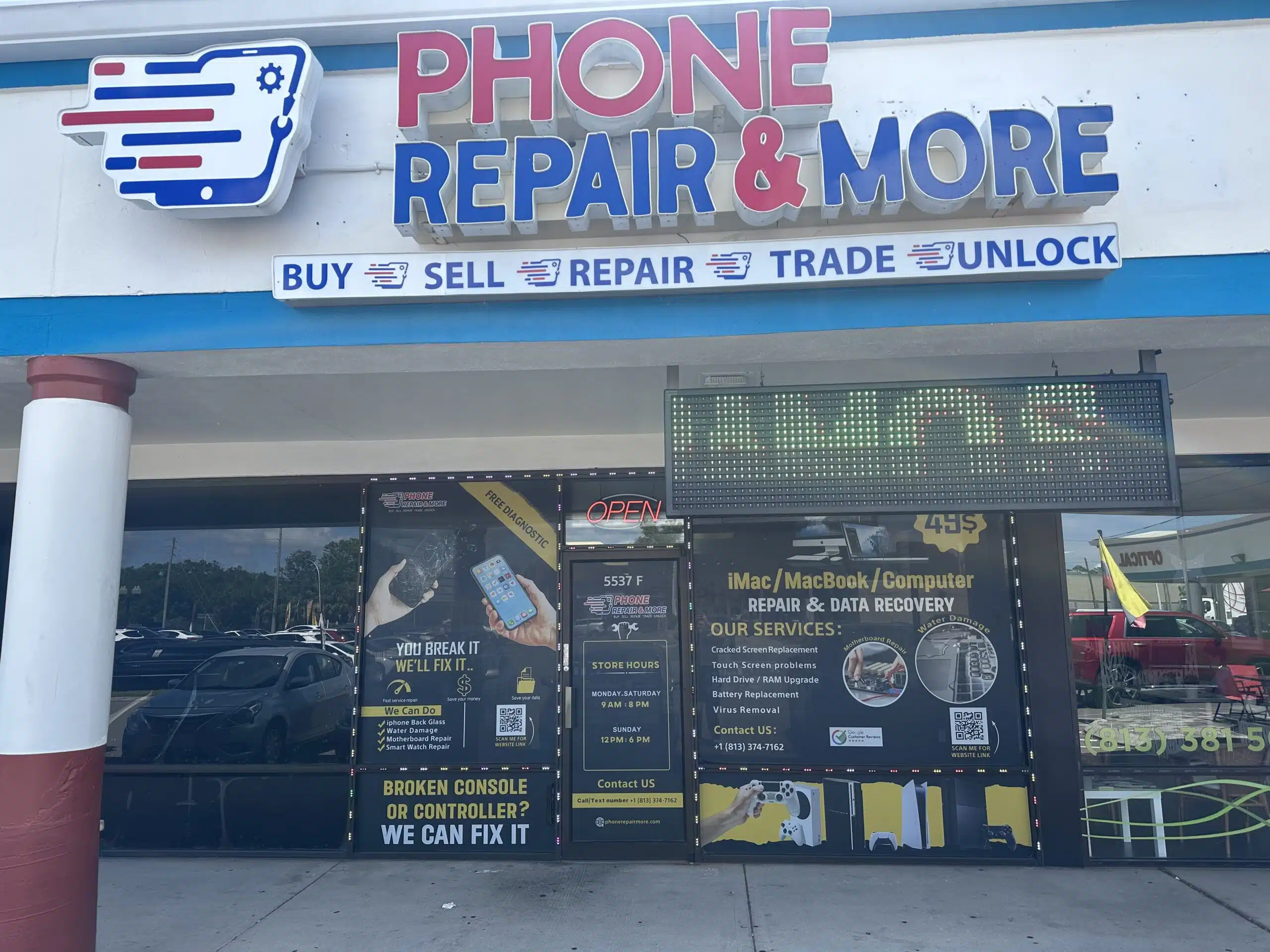Our smartphones control how we talk, work, and have fun. Have you wondered when it’s time for a new one? Most people wait almost three years before getting a new phone. Signs like slow performance, battery problems, and old features mean it might be time to upgrade.
Since we spend a lot of time on our phones, knowing when to replace it is key. Phone Repair & More can help you figure out if it’s time for a new one.
Key Takeaways
- Smartphone users often wait nearly three years before considering a replacement.
- Obsolete 3G networks result in millions of devices losing essential functionality.
- Outdated operating systems can make older phones susceptible to performance issues.
- New budget phones offer impressive features, including high-quality cameras and substantial memory.
- Understanding your communication and usage needs is vital in determining if it’s time for an upgrade.
- Assessing the cost of repairs versus a new device can help in making an informed decision.
Signs That Indicate You Need A New Phone
Knowing when to replace your smartphone is key to staying efficient and happy. Look out for signs like phone performance issues and battery life problems. These can help you decide if it’s time for a new one.
Frequent Crashes And Freezes
Crashes and freezes while using apps are a big red flag. They often mean your phone’s software is outdated or it doesn’t have enough RAM. These problems can mess up your day and should not be ignored.
If apps keep crashing or your phone freezes a lot, it’s time to think about getting a new one.
Battery Drain Issues
When your phone needs to be charged all day or drains fast, it’s a sign of trouble. If your battery drops to 80% capacity after two years, it’s time for a new phone. This is important because it affects how you use your phone and could lead to losing your data.
Slow Performance
Slow apps, lag, and a phone that’s hard to use are clear signs of trouble. If your phone is slow, it can make your work and fun time harder. When your phone is slow all the time, it’s a sign of deeper problems that will only get worse.
Your Phone’s Compatibility With Updates
Technology keeps getting better, making it key to keep your phone updated. Older phones often can’t handle new updates, which hurts their speed and safety. Checking if your phone can get updates can show if it’s time for a new one.
Lack Of Software Updates
The iPhone 7, for example, can only go up to iOS 15.8. As new OS versions come out, older phones can’t get them anymore. This makes them outdated and less secure. It’s common for phones to become outdated three years after a new OS is released.
Incompatibility With Apps
Today’s apps need the latest software to work right. For example, 5G phones need special software to use 5G fully. The iPhone 7 can’t do this, making it hard to use new apps. Since we use our phones a lot, having one that can run new apps is important.

Damage And Wear And Tear
Checking your cell phone regularly is key to knowing when it’s time for a new one. Cracked screens and broken buttons are common problems. These issues often come from daily use, especially with older phones. Fixing phone damage quickly can help your phone last longer.
Physical Damage Evaluation
Many people deal with physical damage that affects their phone use. A detailed look at your phone’s outside can show where repairs are needed. Here are some things to check:
- Cracked or broken screens make it hard to use your phone and can cause more problems.
- Buttons that don’t work right can make everyday tasks hard.
- Wear on the phone’s body might mean it’s not as strong and could get more phone damage.
Not fixing these problems can make repairs more expensive. This might lead people to get a new phone instead. Having good IT policies helps deal with damaged phones in a smart way.
Screen And Battery Condition
The state of your phone’s screen and battery is very important. Regular checks can spot problems early:
| Condition | Impact on Usage | Suggested Action |
|---|---|---|
| Cracked Screen | Less clear and harder to touch | Fix or replace based on damage |
| Battery Health Issues | Short battery life; might not last a full day | Replace if under 80% capacity |
| Broken Buttons or Ports | Can’t use basic functions | Needs repair to work again |
Fixing battery problems is also very important. Apple says iPhones should keep at least 80% battery capacity for two years. Getting a new battery might be cheaper than fixing a lot of cell phone repair for older phones. If repairs cost a lot or happen often, getting a new phone might be the best choice.
Changes In Usage Needs
Technology keeps changing, and so do our needs. This means we often need a new smartphone. Our communication habits are evolving, and we want phones that can keep up.
Shift In Communication Habits
Social media is now a big part of our lives. We need phones that can handle all the online interactions. This includes video calls, posting on social media, and sharing multimedia content.
A new phone can help us stay connected. It’s important for keeping up with our digital lives.
Requirement For Advanced Features
We all want better features in our phones. This includes better cameras for photos, faster performance for multitasking, and longer battery life. These features make our phones more useful and enjoyable.
Getting a new phone that meets these needs can really improve our lives. It helps us use technology to its fullest potential.

Age Of Your Current Device
Knowing how old your smartphone is key to deciding if you need a new one. Smartphones usually last two to three years. But, with good care, they can last longer. As phones get older, they often start to slow down, making an upgrade a good idea.
General Lifespan Of Smartphones
Most makers say it’s time for a new phone after three years. New tech can make old phones seem slow. A year-old phone might be as good as a new one in some ways.
But, older phones often lack the latest features. This includes screen size, display quality, and camera performance. These differences grow as phones get older.
Impact Of Age On Performance
Parts like batteries and processors get worse with time. This can make your phone slow, not hold a charge, or get hot. These signs mean it’s time for a new phone.
Ignoring these signs can make your phone outdated. Most phones get updates for 3 to 4 years. Knowing when to upgrade can save you money and hassle.
Watching for these signs can help you switch phones smoothly. This way, you stay up-to-date with technology and can keep up with your daily tasks.
Want to know more about when to get a new phone? Or see specific signs that mean it’s time for an upgrade? Learn more here.
Cost Vs. Benefit Analysis
Understanding when to repair or replace your cell phone is key. A cost vs. benefit analysis helps you decide. It’s about weighing the cost of fixing your phone against buying a new one. This choice is important in today’s fast-changing tech world.
Cost Of Repairs Vs. New Purchase
Fixing your phone can save money, especially for small problems. For example, a new battery is cheaper than a new phone. But, fixing a broken screen might cost almost as much as a new phone. So, it’s important to compare these costs to decide wisely.
Evaluating Features Vs. Price
New phones come with cool features that make them worth the cost. Better processors, cameras, and storage mean a better experience. Plus, they often come with warranties that save you money later. By doing a cost vs. benefit analysis, you can see if the new phone is really worth it.

| Criteria | Repair | Replacement |
|---|---|---|
| Initial Cost | Generally lower, especially for minor issues | Higher upfront expense |
| Long-Term Value | Can be cost-effective for simple issues | Warranty and new features justify investment |
| Environmental Impact | Reduces electronic waste | Generates e-waste, but newer models may offer sustainability features |
| Convenience | Potentially quicker turnaround | May require more time for shipping or purchasing |
| Overall Satisfaction | May not fix performance or feature limitations | Improved performance and user satisfaction |
Trade-In Programs: An Option?
Trade-in programs are a great way to upgrade your cell phone. They let you swap your old phone for credit towards a new one. Carriers like Verizon and Samsung make this easy and fast. Knowing the benefits can save you money and make switching to a new phone smoother.
Benefits Of Trading In
Trading in your phone can help lower the cost of a new one. You get a trade-in value that you can use on your next purchase. This makes it easier to get a new phone with more features.
Some key benefits include:
- Instant credit or discounts on new devices
- Simplified process for valuing and submitting old devices
- Environmental responsibility by recycling old technology
- Potential for cash back or promotional credits
For example, the Galaxy Family Trade-In program gives you an instant discount. The value depends on your device’s condition and model. For more information, visit this resource.
Popular Trade-In Services
Many services offer good trade-in options. This makes it easier for users to upgrade. Here are a few:
| Service | Key Features |
|---|---|
| Verizon Trade-In | Trade in up to four devices, instant discounts for eligible models |
| Samsung Trade-In | Instant trade-in discounts, includes options for cracked devices |
| Gazelle | Evaluates device condition, competitive offers, eco-friendly recycling |
Using these trade-in programs makes it easy to get a new phone. You can use credits and help the environment by recycling. Make sure to clear your data and meet the criteria before trading in.
Environmental Considerations
Smartphone use is growing fast, leading to more e-waste. People often change their phones, adding to the problem. Knowing the impact and the need for recycling helps us make better choices.
E-Waste And Sustainability
In 2021, over 41 million tonnes of e-waste were made, with only 16 percent recycled. Each new phone adds to this problem. Making one phone uses 80% of its carbon footprint, mainly from resource extraction and manufacturing.
With millions of phones replaced every year, we must think about sustainability.
Importance Of Recycling
Recycling helps both people and the planet. It keeps valuable materials from old phones and cuts down pollution. Companies like Fairphone use sustainable materials and practices.
By recycling, we can lessen e-waste and its harm to the environment. We might even get rewards for our efforts.
| Impact Area | Statistical Insight |
|---|---|
| Global Smartphone Users (2023) | 6.93 billion |
| Annual E-Waste Produced | 41 million tonnes |
| Percentage of E-Waste Recycled | Less than 16% |
| Carbon Footprint of Smartphones | 63 kg CO2e per smartphone |
Being aware and recycling e-waste is key to a sustainable future. Every choice we make when replacing our phones affects the planet.
Conclusion: Making The Right Choice
Deciding if it’s time for a new smartphone is complex. It depends on your personal needs and how well your current phone works. Over 50% of people choose a new phone based on their own needs and habits.
Checking how well your phone works and its battery life is key. This can help you decide if it’s time for a new one.
Choosing between a new or used phone can save money. Refurbished phones are often 40% cheaper than new ones but still work great. About 80% of people are happy with their used phones, saying they’re as good as new.
Think about what you need in a phone. For example, 70% of people look at things like processor speed and storage. Knowing what you want helps you choose the right phone, whether it’s the latest iPhone or an Android.






















